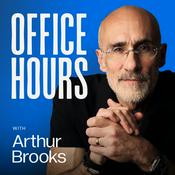35 episódios

Physiologically Speaking Live | 12.25.25
25/12/2025 | 17min
This is a public episode. If you'd like to discuss this with other subscribers or get access to bonus episodes, visit www.physiologicallyspeaking.com/subscribe

Physiologically Speaking Live | 12.10.25
10/12/2025 | 13min
If you’re wondering, “Did he say airports in gyms instead of gyms in airports?”, the answer is yes. OOPS.Thank you to everyone who tuned into my live video! Join me for my next live video in the app. This is a public episode. If you'd like to discuss this with other subscribers or get access to bonus episodes, visit www.physiologicallyspeaking.com/subscribe

Physiologically Speaking Live | 12.4.2025
04/12/2025 | 19min
This is a public episode. If you'd like to discuss this with other subscribers or get access to bonus episodes, visit www.physiologicallyspeaking.com/subscribe

Physiologically Speaking Live | 12.1.25
01/12/2025 | 8min
This is a public episode. If you'd like to discuss this with other subscribers or get access to bonus episodes, visit www.physiologicallyspeaking.com/subscribe

Training Update + a Look into My Injury History as a Runner
01/12/2025 | 39min
Greetings!I sat down this weekend to record a short video to provide an update on my current training and injury status and share some stories about my injury history as a runner. I opened up a bit about some struggles, what I’ve learned, and what I want to improve on in the future. Thanks for watching.~Brady~ This is a public episode. If you'd like to discuss this with other subscribers or get access to bonus episodes, visit www.physiologicallyspeaking.com/subscribe
Mais podcasts de Saúde e fitness
Podcasts em tendência em Saúde e fitness
Sobre Physiologically Speaking
Ouça Physiologically Speaking, Comida sem Filtro e muitos outros podcasts de todo o mundo com o aplicativo o radio.net

Obtenha o aplicativo gratuito radio.net
- Guardar rádios e podcasts favoritos
- Transmissão via Wi-Fi ou Bluetooth
- Carplay & Android Audo compatìvel
- E ainda mais funções
Obtenha o aplicativo gratuito radio.net
- Guardar rádios e podcasts favoritos
- Transmissão via Wi-Fi ou Bluetooth
- Carplay & Android Audo compatìvel
- E ainda mais funções


Physiologically Speaking
baixe o aplicativo,
ouça.






































